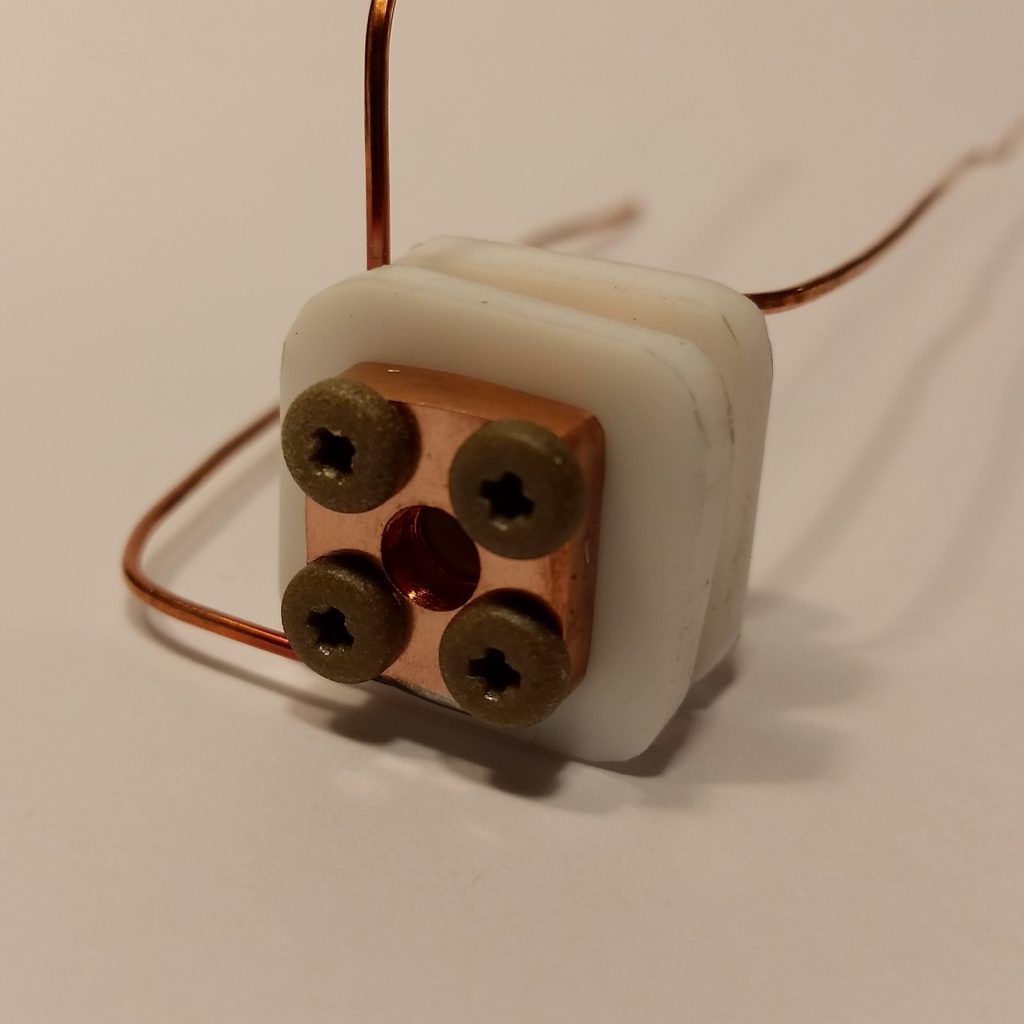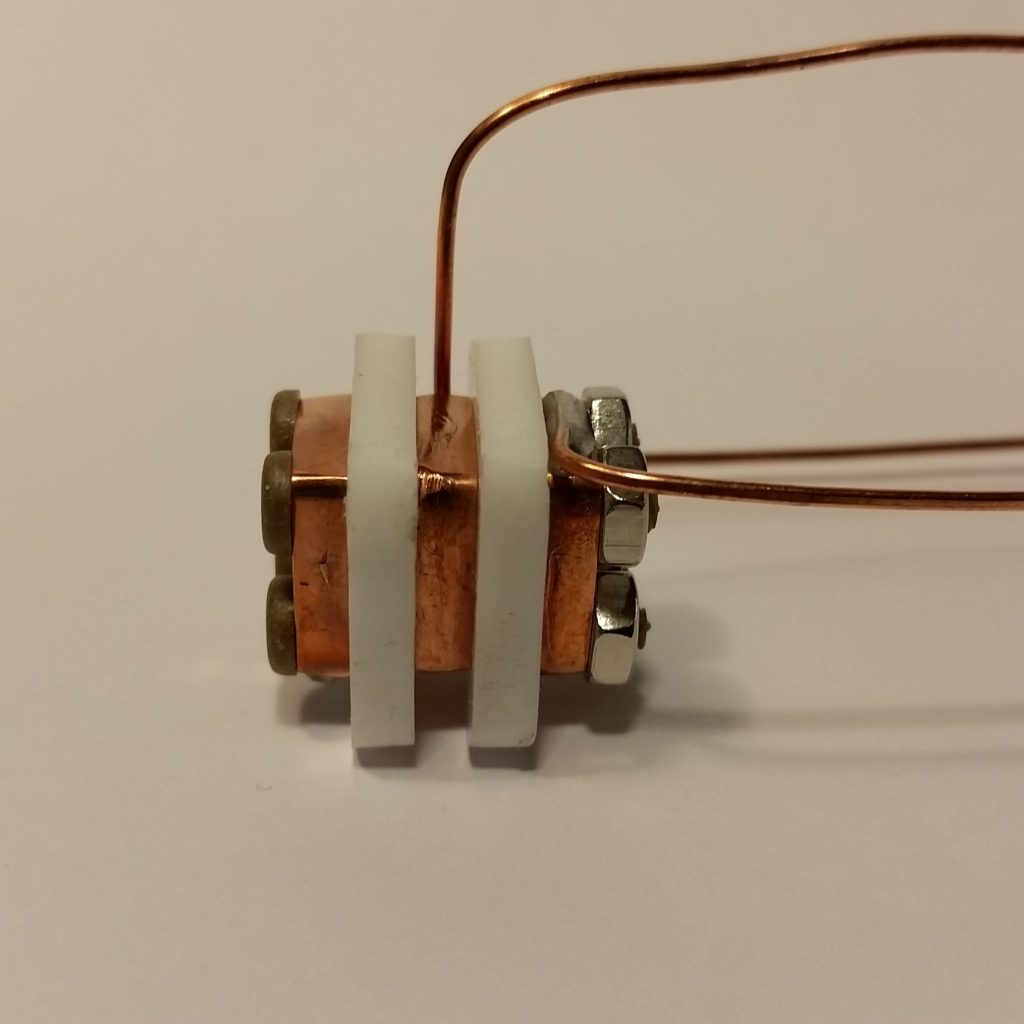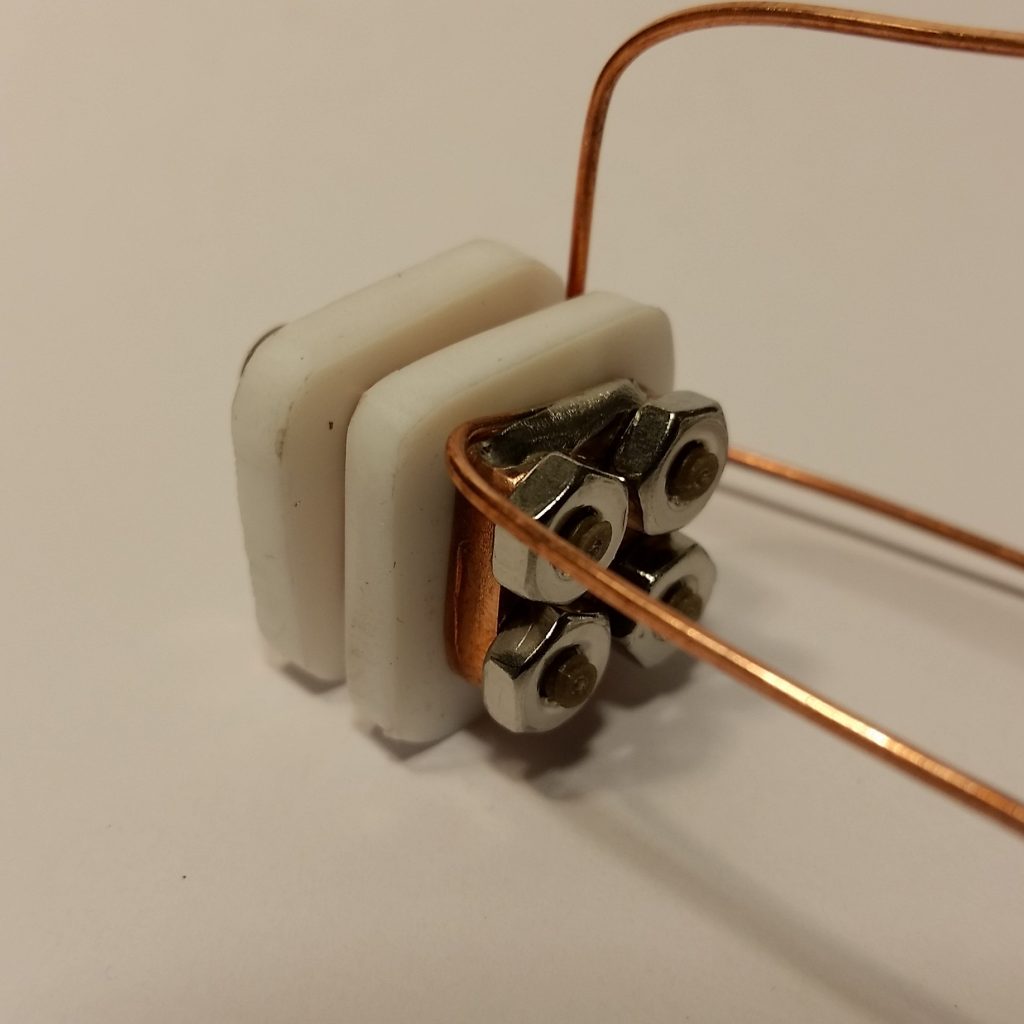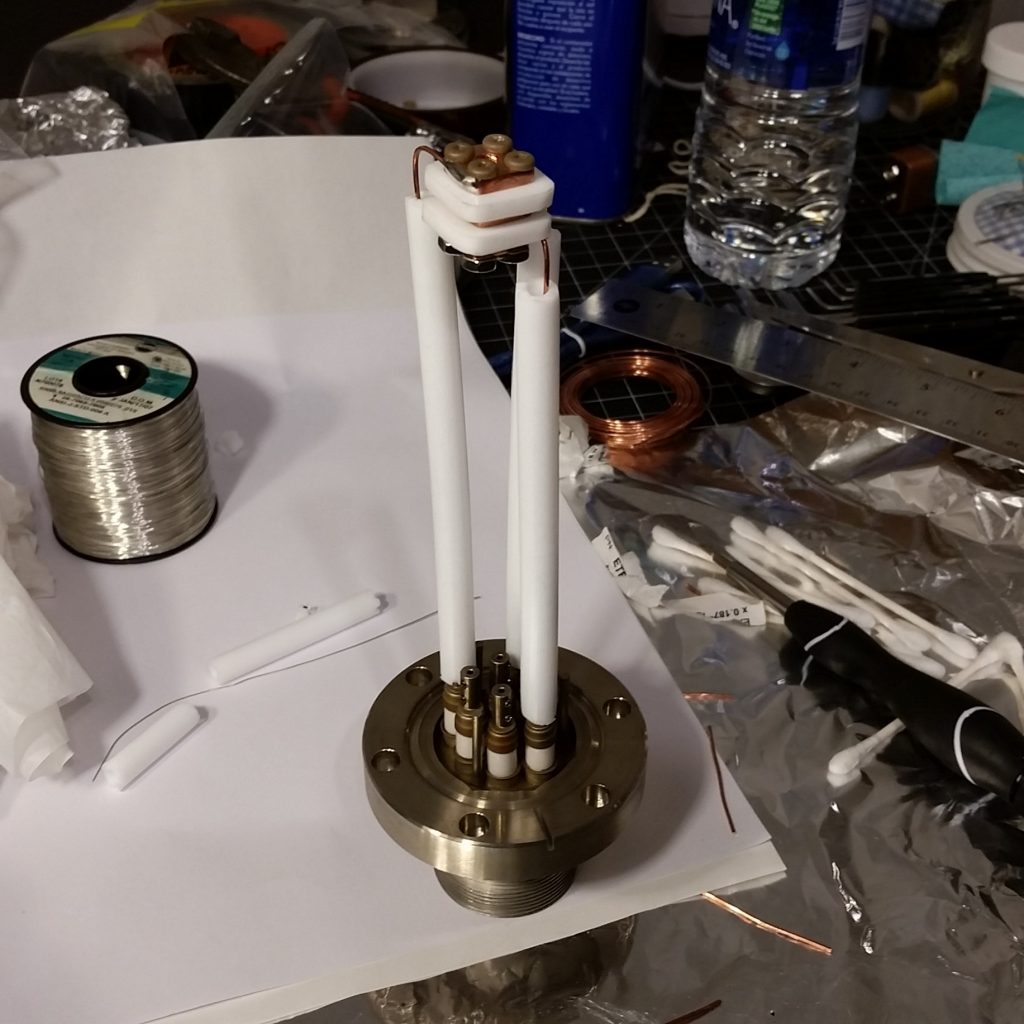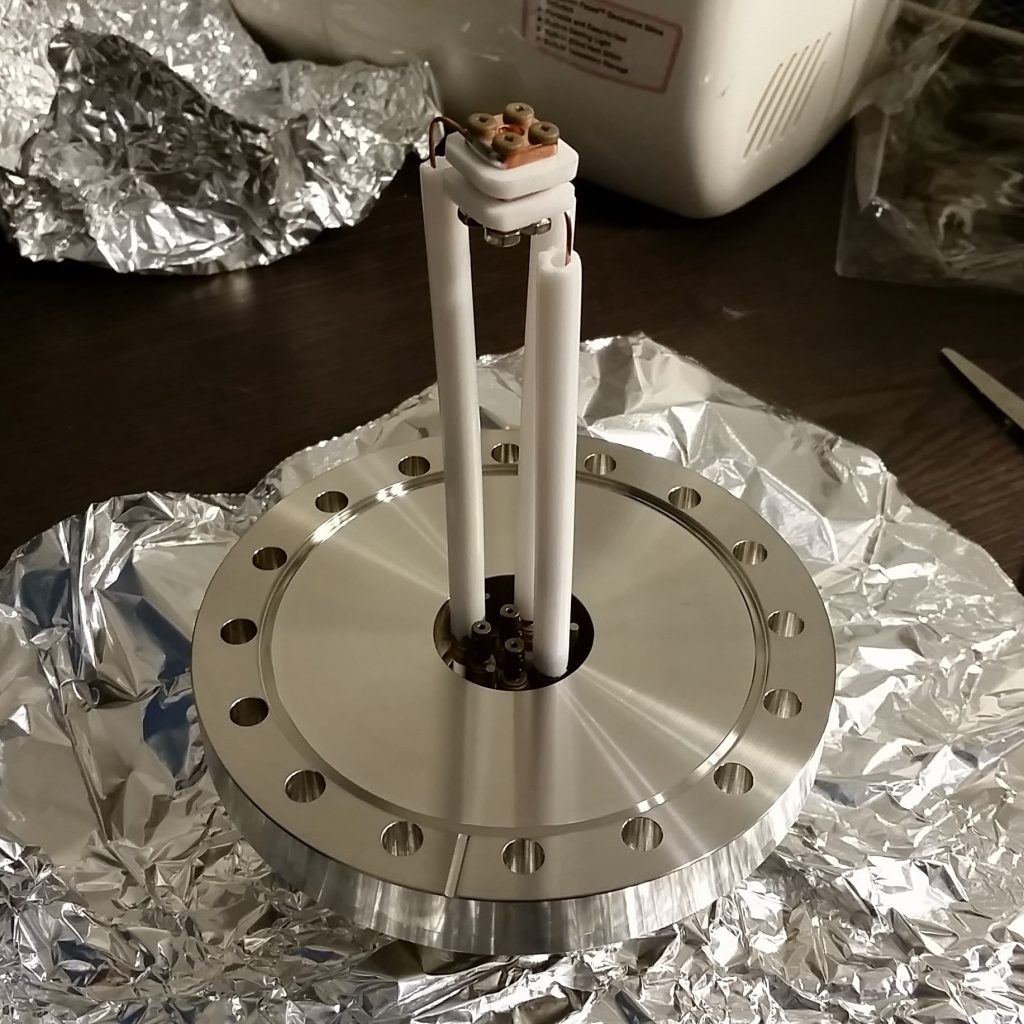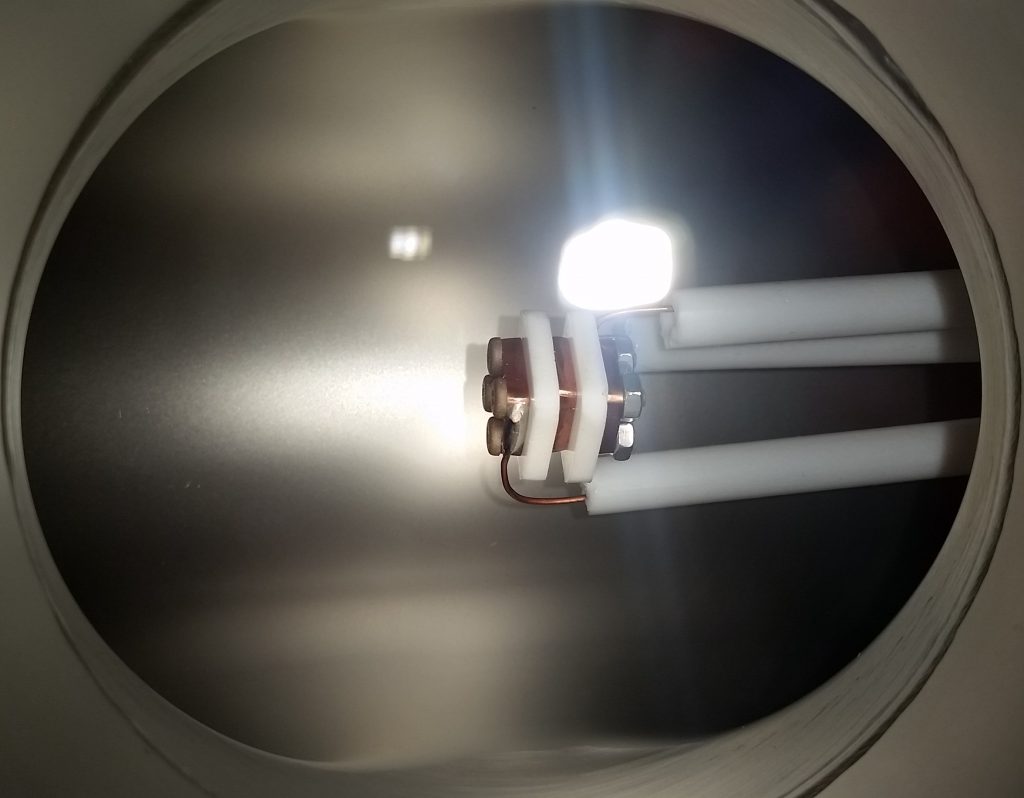After the first two failed ignition attempts of the AIS-uPPT1 and the AIS-gPPT1 thrusters, I began work immediately on the next generation thruster, focusing on continuing my efforts with the gPPT Gridded Pulsed Plasma Thruster line. From the prior testing of the first generation thruster, I established that the primary mode of failure was the inability to ignite the thruster due to wide igniter-cathode spacing. Over the course of a week, I designed and built a much simpler, single channel version: the AIS-gPPT2-1C Single Channel Gridded Pulsed Plasma Thruster. Full details of the thruster specifications and build can be found in both the propulsion specs page as well as the gallery page for the thruster.
This tiny thruster utilizes a single channel in order to more easily qualify performance of this unique micro-PPT design, and allow for much more rapid construction, prototyping, and design changes. In addition, the igniter was changed to be the second plate, while the cathode was changed to be the back plate with the pin. The pin was also made to fully extend into the second plate channel, allowing for an extremely close gap and further increasing total ignition surface area.
In addition to improving ignition design, I also radically simplified thruster connections going into the chamber, having learned valuable lessons from the prior two attempts. This included more direct connection into the chamber, as well as Teflon tube insulation and thruster mounting connections and shortened connection length.
The thruster was quickly mounted in the testing chamber, and everything checked and prepped for testing. At this point I had also repaired and replaced most of the damaged electronics from the prior testing, and was clear for this new ignition test. On May 26, 2019, the first ignition test of this new thruster was performed. Pumpdown went smoothly and without issue. A vacuum of 1×10^-5 Torr was achieved before turning on high voltage. The main high voltage bank was turned, and the ignition pulser was engaged.
The thruster lit up with a brilliant plasma plume emanating from the thruster output. The thruster fired again and again, without any issues. Finally, after two prior failed thruster builds and ignition attempts, I had success! The AIS-gPPT2-1C officially passed Phase I ignition testing! This was the biggest milestone achieved yet at Applied Ion Systems. This also represented a major advance in open-source maker-based electric propulsion. Finally, a working thruster prototype, specifically for PocketQubes, was operational!

The thruster was first fired at low repetition rates, to allow time for the capacitor to fully charge. The capacitor used was a 1uF polypropylene film capacitor. Voltage ranged from 680V to 2300V depending on repetition rate and charging time, corresponding to a stored energy range of 0.23J to 2.65J. Ignition was also relatively easy, and kept to a value of less than 4kV. Video of the thruster in operation at low repetition rate, full power can be seen below:
For the second part of the test, I decided to increase the repetition rate to explore how this change would affect thruster performance. Due to the limited charging current of only 1.5mA, total capacitor energy during each shot was reduced due to the lower voltage reached in the time required to fire at 2 Hz, as expected. This resulted in a much smaller plasma plume during operation, corresponding to a main capacitor bank voltage of 680V, with an energy of only 0.23J. Interestingly, you can also see the plasma ignition inside the thruster through the Teflon.
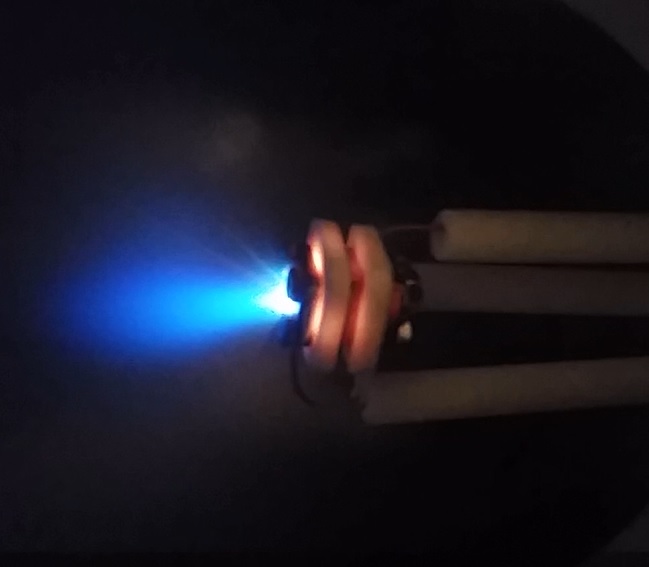
Despite the higher repetition rate, operation of the thruster went very smoothly, and fired very well. A video of the thruster at 2 Hz operation can be seen below:
With the successful completion of the first ignition testing of the AIS-gPPT2-1C thruster, the doors are now wide open for continued experiments on the thruster. The next main tests that will be explored for this thruster will be lifetime testing, as well as thrust measurements. Already, the thruster has clocked 298 full power ignitions recorded on video, as well as 82 reduced power ignitions. However, total ignitions is higher, as the thruster continued to fire as a started and stopped video, as well as after video recording was complete. With the successful operation of this thruster, the unique topology of the gPPT line can be further explored and improved upon for PQ propulsion development, and I can finally say that open-source, maker based advanced electric propulsion testing and development at high vacuum has officially begun at Applied Ion Systems! There is lots more exciting developments on the horizon, so stay tuned for further updates on the Applied Ion Systems social media pages and here on the main site!




